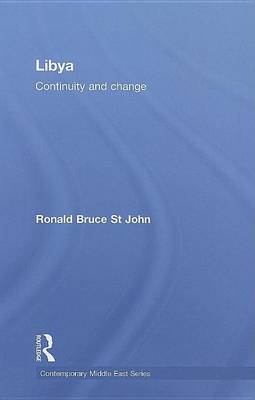The Contemporary Middle East
2 total works
This book examines the socioeconomic and political development of Libya from earliest times to the present, concentrating in particular on the four decades of revolutionary rule which began in 1969. Focusing on the twin themes of continuity and change, Ronald Bruce St John emphasises the full extent to which the revolutionary government has distorted the depth and breadth of the post-1969 revolution by stressing policy change at the expense of policy continuity.
Following a brief look at pre-independence Libya, the author explores the way in which the fragility of the post-independence state, unable to contain rising Arab nationalist struggles and growing economic expectations, opened the way for the Free Unionist Officers led by Muammar al-Qaddafi to seize power. He then traces the progressive development of the revolutionary state through four stages:
- the consolidation of power to 1973
- the projection of power to 1986
- withdrawal and retrenchment to 1999
- the redefinition of the state after 1999.
Highlighting the issues facing the contemporary state and providing possible solutions, this book will be an important text for students of current affairs, history, North Africa and the Middle East.

